I am a bit engaged with my new business activities, but recently I've become fascinated with pre-war Polish military.
Frankly after over 20 years of 'marriage' with history (ok - add law to that - is it a triangle already?) I am rediscovering the entire thing.
Because in recent years the subject is gradually being revised by new generation of historians in Poland my knowledge is fresh.
I am a bit occupied, but if you have any questions I might answer them so shoot.
Here is a list of facts you might find interesting.
General
1. Poland's military was 7th strongest in the world at that time - obviously there is a large difference between nr 1, 2 or 3 and 7, but let's keep this number in mind.
2. Poland spent c. 1/3 of its budget on military needs during the Interbellum which is slightly less (in percent) than Belgium which in theory made it more militaristic than Soviet Union or Germany.
Even more - even 50% of the budget was spent during the final years before the war - oficailly and unoficially because weaponry was exported to gain funds and pay for modern weapons for the Polish Army also unoficially.
For example Poland was the second largest supplier of the Spanish Republic (the public supported the Nationalists, but they had little money) - that included 80 tanks, 300+ cannons, 4000+ machine guns, 120 000+ rifles, 1 500 000 - 2 000 000 hand granades etc.
Polish made weaponry was exported to Britain (40 mm AA cannons), Romania, Greece, Turkey, Bulgaria (with expert help for aircraft industry), China, Estonia etc.
This lowered the cost of equipment for the Polish Army and some units were simply created from the funds gained this way. For example the second tank battalion was funded by the money the Republic paid for obsolate and almost useless FT-17.
3. The army was seen as the backbone of the state, before the Piłsudski's coup and after it. Actually all political parties supported the effort to create strong and well equipped army.
4. The idea 'Nation at Arms' was more than a phrase because the army gained the status of a major employer and education institution - in 1918 over 50% of the population was illiterate and every group of conscripts had to be educated, especially in eastern areas.
The Nation at Arms gave the army great influence in political life - which is a known fact, but there is another angle.
Simply as newly independent country which fought 6 wars between 1918 and 1923 the army continued traditions of XIXth century uprisings - January Uprising (1863-64) veterans were especially respected so the army attracted many best educated people. Piłsudski's Legions which fought during the Great War were even called 'the smartest brigades in the world' because of a number of artists, scientists, doctors and lawyers it included.
All that results in a large number of paramilitary organisations, large number of volunteers etc. For example there were almost 700 000 women trained to perform auxiliary duties.
5. Minorites in the army were treated with some distrust. Poles were favoured, especially as officers - quite similar to the situation in pre-war Czechoslovakia.
Germans were seen as reliable but only against the Soviets so they were sent to the eastern border. In 1939 at least 8 000 of them were in the army with 4 000 deployed in the east - they fought well against that enemy.
There was a small number of officers coming from this minority including at least one general (Otton Kirsch commander of artillery in SGO 'Narew') and most amazingly admiral Unrug - co-founder of the Polish Navy - an U-Boot commander born in Berlin whom the British even tried to prosecute for 'war crimes', but gave up.
Funny enough he led the defence of Hel garrison which capitualted on the 2nd October and in captivity 'refused to understand' German demanding translators' presence even during visits of his relatives from Germany.
Belorussians were considered good soldiers. Several of the best divisions in 1939 fighting in the Polish Army included them.
There were very few Belorussian officers owing that to several factors - one is the decision to discourage them from getting into officers schools, second powerty of the population in least developed area of the state (many landless peasants).
Ukrainians were a problem because the authorities supported Ukrainian exiles hoping to create free Ukraine. There were detailed (I know them well) plans to mobilize allied force consisting of Ukrainian allies (5 divisions in first phase!).
So Ukrainians from former Russian Empire were supprted in many ways (so far that in 1930-33 Piłsudski toyed with an idea to invade Soviet Union - floods of hungry refugees from Soviet Ukraine were crossing the borders and that spurred the exiles to lobby for a preventive war), but those from former Austria-Hungary or red Ruthenia were seen as possible enemies, separatists who could undermine peace in the territory seen as rightfully Polish ( mainly it is about Lwów/L'viv beonging to Poland from the XIVth century).
In 1939 they were suprisingly reliable following Ukrainian political leaders dismayed with German handling of short lived Ruthenian state in Czechoslovakia grasped by Hungary in 1939 and with the R-M Pact.
Jews were clearly the most favoured minority (but still misrepresented) who reached 6,5% of officers in the army (compared to 12% of the population they formed) - espcially favoured as doctors.
I know two Jewish generals - Bernard Mond commander of 6th (Cracov) Infantry Division
and Mieczysław Norwid-Neugebauer heading Polish military mission to the UK in 1939. Both owe that to their activity in the independence movement before 1918.
Opinion about them was often rather bad as unreliable soldiers, but I believe that might have something to do incidents with avoiding service before the war.
Georgians, Tartars and various exiles (Russian, Azeri, Armenians even some Dagestani, Checens etc) performed usually admirably. There was even one Italian.
I am still studying this subject - very interesting stuff.
Air force
======
1. There were c. 900 combat airplanes with 400 in first line (the rest were reserve, transport and in repair) + c. 1000 trainers and utility.
2. The airforce followed years long development plans based on specific calculations limited to the number which could be supported by expanding infrastructure and should consist of models produced in Poland.
3. The bomber force was supposed to be strong enough to act as a 'force in being' forcing the enemy to deploy large air defensive formations tied which wouldn't be immediatelly available to support the ground operations.
Of course its main task was to perform specific duties and that for example included a tactical bombing operation against Konigsberg, Stettin, Breslau or Berlin in the west (in response of similar attacks on cities in Poland) or to paralyse Soviet logistics in the east where for example just destruction of 7 key bridges would demolish supply system for the entire Belorussian theater of war.
That exaplains the existence of central forces for this task - with 3 bombing brigades in plans - one existed in 1939.
Because of a number of unexpected accidents modern PZL 37 Łoś was developed together with LWS Żubr which was supposed to be an interim solution or even buckup.
From 1940 Łoś would be replaced by PZL 49 Miś - heavier, faster and better armed model sharing the same, successful design.
4. Tactical support was to be left to local groups assigned to each army.
Because recon was seen as especially important (based on experiences from the war against the Soviets in 1919-20) a line of recon-bomber airplanes was developed and produced - PZL 23B Karaś is the model present in 1939 (from late 1939 would be replaced by PZL 46 Sum and that by PZL Łosoś or extravagant PWS-46 in 1942-43).
5. Fighter force was supposed to cover key industrial areas, but its priority was to protect mobilizing troops, especially central reserve forces around Brześć in case of the war against the Soviets.
In 1939 Poland's air defences were relatively modern in Warsaw area and proved effective to 6-7 September when observer stations had to be evacuated.
It was supposed to cover COP industrial area later and eventually a large part of the state to 1942-43 following expansion of AA artillery, air bases and most likely inclusion of new radar systems.
In 1939 first prototype radars were being tested either by the TKND or PIT (the latter was developing radars after the war) so it is reasonale the new equipment would find use later.
6. In 1939 the air forces were redeployed to field bases which saved it from destruction, but eventually resulted in a shortage of spare parts and supplies which grounded many planes in the second week of the campaign.
I'd like to mention that if the Pursuit Brigade defending Warsaw is quite well known the efforts of the air group covering armies 'Pomorze' and 'Poznań' and their counteroffensive at Bzura is not.
It is quite interesting, but this small force (c. 50 airplanes) contributed a lot to covering movement of those two armies to the north of German 8th Army hunting down a number of recon Hs-126 flying in the area.
7. Aircraft industry is one of the most impressive achievements of the pre-war 2nd Republic because from almost nothing a group of strong companies was born, especially favoured state-owned PZL.
People in charge of the Polish Airforce, especially Ludomił Rayski (interesting - ws flying in Ottoman forces during the 1st WW) believed that this branch of industry should be under state's controll and actually forced Lublin aircraft manufacturer PiL into bankrupcy in 1935 trying something similar with DWL (RWD brand).
The idea was to transfer technology and gradually develop each major company - PZL in Warsaw, PWS (trainers, mainly wooden) and LWS (created from nationalised PiL) in Lublin. LWS for example was to be ready in 1941 to produce modern models.
PZL itself was expanded with a new industrial complex in Mielec-Rzeszów (presently manufacture Blackhawks, parts for F-16 and a number of local designs including An-28 Skytruck purchased recently for US Special Forces).
All-wooden airplanes from the PWS would be ready for frontline, combat service with production of PWS-46 in 1942 or a light fighter model earlier).
Private owned DWL/RWD specialising in light civilian, sport and utility models from 1939 - as a matter of urgency and desperation - gained more attention with light fighter model PWD-25 developed by this company (naval bomber RWD-22 is a design for later years to support expansion of the Navy).
About 4 000 airplanes were produced in Poland
8. Training was reorganised into two main centers - CWOL 1 around Dęblin (central Poland) and CWOL 2 around Warsaw (included schools moved from other areas such as the one from Grudziądz - in 'the corridor').
Polish fighter pilots are well known and highly valued, but bomber crews were also judged well. According to British studies from the war only Polish navigators were considered worse prepared. I guess that owes to the fact the navigaton over water features was less important.
9. Naval airforce consisted of a small number of locally produced models or light floatplane recon and training planes.
In 1937 a deal was signed in Italy to purchase a number of CANT airplanes after some negotiations which would have to include a equipment manufactured in Poland.
After many delays because of German interference and due to some scandals (such as an incident were a storehouse with equipment from Poland was almost robbed - of course oficially because it was likely a case of industrial espionage) only a singular example reached Poland - with no weaponry because torpedoes were only in production in Poland.
Eventually to 1942 naval forces would use c. 24 foreign produced models and a number of bomber-trainers RWD 22.
NAVY
=======
1. C. 80% of Poland's export and import went through expanding, modern Gdynia seaport or through Danzig.
During the period it would be mainly coal from Silesia sold to Scandinavia.
That includes also high quality metal ores from Sweden and unavailable in Poland or things so basic as cotton from the USA which was also an importer of finished textiles.
2. Gdynia was quickly deloveping starting as a port to bypass unreliable (in 1920 transports of weaponry were blocked) Danzig.
Actually it is the second (together with Katowize in Silesia) modernist architecture jewel in Poland and still one of most important ports in the Baltic Sea.
In 1939 first merchant vessel was being constructed in Gdynia (m/s Olza - finished by Germans eventually became raider 'Michel' operating in the Pacific).
There were three important military shipyards.
One in Gdynia where four modern minesweepers (with good ASW equipment which is recent discovery) were finished and two, large, modern (Grom-mod class) were supposed to be built to 1942 - OORP 'Huragan' and 'Orkan'.
There were also plans to build one submarine using expert help from France and the Netherlands (engineers trained there during the construction of OORP Orzel and Sęp) from planned Orzel-mod class to 1942-43.
The second and the third were river shipyards - in Modlin north to Warsaw and in Kraków where river monitors were built.
3. Gdynia was considerd extremely important to the survival of the state, that is why the city itself wasn't defended because its destruction during the fighting would mean a disaster for years afterwards.
4. Coastal defences were developed after the fleet itself was operational which was a priority so only in 1930s coastal batteries were created with plans for 305 mm battery in Hel for 1941, maybe 1940.
In 1939 Poland asked Britain to lend one old monitor or two to use it as a coastal defence following British promises of military aid which was refused.
5. The Navy was a very important weapon in case of a war against the Soviets and was developed to face them.
This explains why all destroyers were large models supposed to deal with the most likely opponent to reach Poland's trade lines - large Soviet destroyers.
That is why Grom class destroyers (OORP 'Grom' and 'Błyskawica') were armed so well (7 x 120 mm).
The navy was also supposed to perform aggressive missions with the main task to block the Finnish Gulf to Soviet battleships and other capital vessels.
The idea was to deploy minefields in the zone between friendly countries - Estonia and Finland where submarine minelayers, destroyers with minelying capabilities and large minelyer ORP 'Gryf' (up to 600 mines in one go) would play important part.
To support the barrier large submarines were ordered in the Netherlands - the Orzel class (and for later years Orzel-mod class) with massive punch from its 12 torpedo tubes nicknamed 'Gangut-killers' by some enthusiasts nowadays.
The plan was most likely consulted with Estonia and Finland because both of them had similar designs in mind with addition of coastal batteries and small submarines such as Estonian 'Lembit' and 'Kalev'.
Certainly Estonia would serve as an information source if it stayed neutral.
Plans for 1942 included expansion of the navy to 8 destroyers (2 built in Poland) from 4 in 1939, one light cruiser and at least 8 submarines (3 from Orzel-mod, 1 likely constructed in Poland, construction of two started in France) from 5 in 1939, another 6 minesweeper-light miniers with ASW capabilities and at least 16 light torpedo boats.
6. Coastal defences from an attack from the land were least important in those plans so only around 1938 they were given support.
Gdynia would be pretty much useless in any conflict with Germany - that is why light torpedo boats were only purchased in 1939 (and some of them used by Polish Navy during the war in Britain). Large vessels would be sent to the UK or France to escort convoys to friendly Romania - Soviet attacks would close down that route of course.
The ground forces could be small at first to defend beaches against nearly impossible Soviet coastal invasion (rather suicide), but with growing probability and necessity to engage as large German forces as possible they were developed around two 'marine' rifle battalions and National Defence units (territorial guard).
In 1939 it was formed around Morska (Sea) Obrona Wybrzeża and Lądowa (Ground) Obrona Wybrzeża (coastal defence) commanded by admiral Unrug (yep the 'german').
It would consist of a number of lower and greater quality units supported by volunteers.
Border Guard Corps (KOP - Korpus Ochrony Pogranicza) units from the east and 'marine' battalions (expanded to small regiments) would be the best part, third rate militia units to guard beaches of Hel against unlikely German assault the worst.
The last were so bad that the officers assigned to them discovered those guys probably served the list time... in Kaiser's army and their morale proved probably the worst in the entire Polish Army.
In late September (after Warsaw surrendered) they started a mutiny pacified by only by KOP forces.
Because MOW and LOW were quickly separated they can be treated as separate entities. MOW barely had to fight because German assaults on Hel were first weak, later repelled, next succeed to capture some ground so that KOP units retreated and blown the part of the penninsula up isolating the area.
Coastal artillery was more busy and managed to 'discurage' both Kriegsmarine pre-dreadnoughts from doing anything important so that Hel was the last town in Poland with regular train departures and working post office.
Lądowa Obrona Wybrzeża fought very well. Colonel Dąbek who literally built if from some barely functioning units proved to be excellent commander, especially with his numerous night operations which proved one of those aspects of the whole campaign where Poles proved more than good.
Isolated the LOW capitulated on the 19th September after Colonel Dąbek ordered it and commited suicide.
7. River flotillas - second, large and important part of the navy - yet often overlooked.
Good for tomorrow together with the land forces part.
Ground forces
===========
I'll do that tomorrow and because I have an unintended habit to abandon threads due to notorious lack of time I'll write as much as possible in one post using information I remember.
If you have any questions about anything I might answer them - though not something too detailed.
Here are some images for the air force - naval bit
propaganda poster about industrialization plan which I am quite certain would work because parts of it were adopted after the war and many people in charge of it (e.g. Eugeniusz Kwiatkowski) were very reasonable and quite brilliant.
Warsaw air defence sections and zones. Interesting, but those guys used 'the big wing' formation during the defence.
Image from a women training, summer camp from 1939
A shot for PZL manufacturing plant and PZL 37B in production
PWS-46
Badge of 1st Air Regiment (from Warsaw). Regiments were peacetime structures, there were 6 of them - in Warsaw, Poznań, Torun, Kraków, Lwów (Lviv) and Lida (close to Wilno/Vilnius)
passenger and transport plane PZL 44 Wicher
PZL 55 vs. Ju 187 in 1942 - 'what if'
propaganda poster
poster of the 1 million large colonial movement (supported expansion of the navy and bought ORP 'Orzel' submarine)
Light fighter PZL 45 Sokół (light fighter, never built)
PZL 50A Jastrząb (two prototypes - 1,5 year of unexpected, accidental delays!)
Finnish-Estonian plan to block the Finnish Gulf
And small appetisers:
Another stage of reconstruction of a mysterious tank developed in 1939
sometimes nicknamed as '34TP'.
Polish riflemen c. 1941 with semi-automatic ('Maroszek') rifle
siege mortar tested in 1939
the man in charge of mobilization plans for allied Ukrainian army
exiles from Caucasus submit their condolences after Piłsudski's death
Information tomorrow if anyone wants it - including colonial initiatives, secret weapons, black ops of K-7 special service, special tactics in 1939 and best commanders of the POL army (according to me after considerable time I've spent over it).










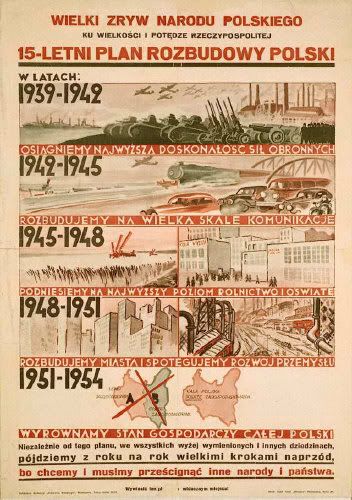

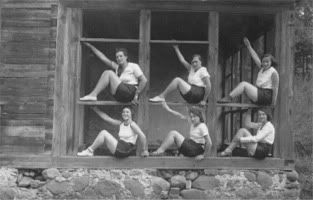



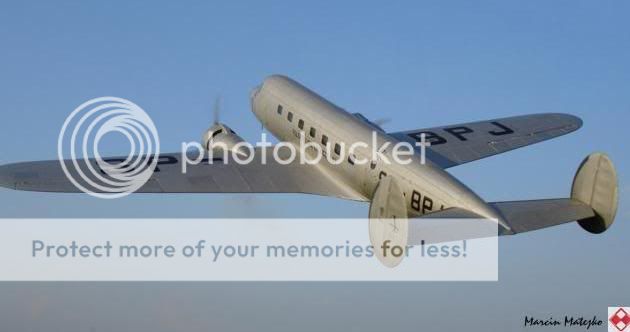
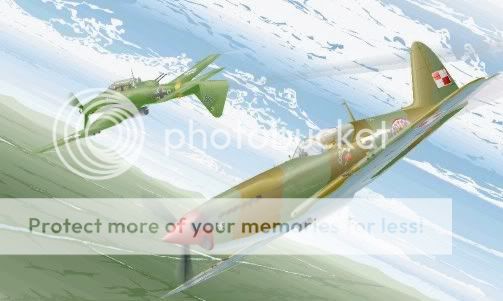
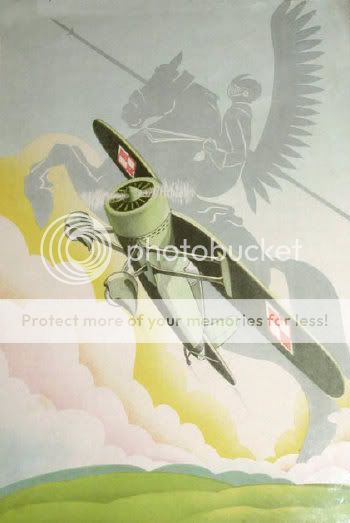

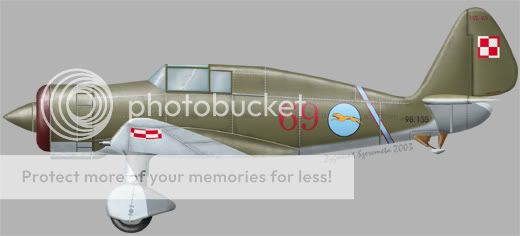
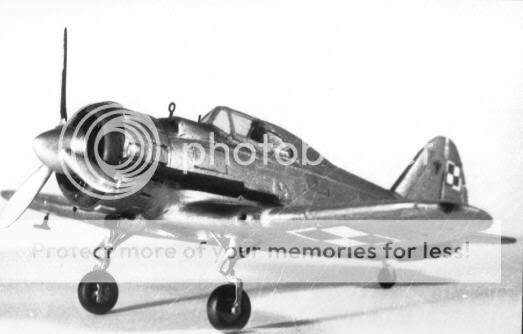





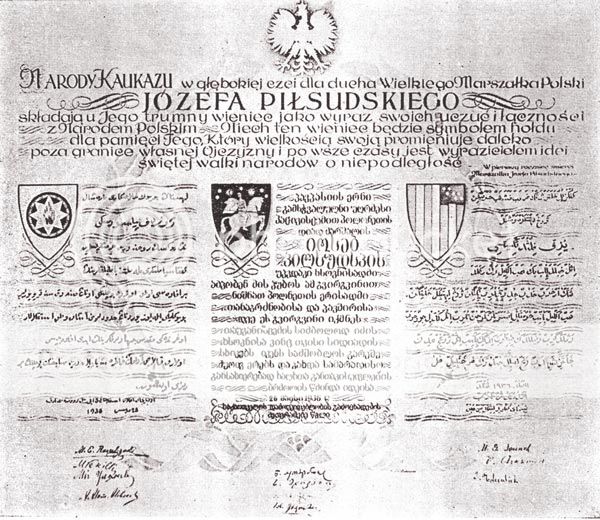


 Reply With Quote
Reply With Quote
Bookmarks